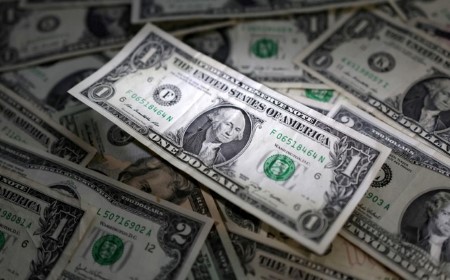




Philippines Trade Update: Trade trajectories trend along
 DOWNLOAD
DOWNLOAD

Policy Rate Updates: Double cut finale
 DOWNLOAD
DOWNLOAD

Monthly Economic Update: One for the road
 DOWNLOAD
DOWNLOAD


US yields tick higher on inflation scare, two-year hits 5%

NEW YORK, April 11 – US Treasury yields pushed higher on Thursday with two-year yields breaching 5% for the first time since November, as investors worried over rebounding inflation despite the release of softer-than-expected March producer prices data.
Yields, which move inversely to prices, had soared on Wednesday on the back of hotter-than-anticipated inflation data that has raised doubt over the Federal Reserve’s ability to lower interest rates this year. The selling pressure continued on Thursday, though to a smaller extent.
“Typically when you get a big shock like that markets take about three days to normalize. Day two, we’re still squaring some positions, some late tap-on-the-shoulder sellers are out there,” said Guy LeBas, chief fixed income strategist at Janney Montgomery Scott.
The producer price index rose 0.2% month-on-month in March, below an expected 0.3% increase. Meanwhile, the number of Americans filing new claims for unemployment benefits fell more than expected last week, suggesting the labor market remained fairly tight.
Benchmark 10-year yields were last seen at 4.574%, about one basis point above Wednesday’s levels. Two-year yields, which tend to more directly reflect expectations on monetary policy, briefly breached 5% but declined later and were last at 4.956%, slightly lower on the day.
While producer prices for March were welcome news, investors were still scarred by Wednesday’s release of the consumer price index, which showed inflation remains sticky.
“The big event really was yesterday’s CPI,” said Michael Reynolds, vice president of investment strategy at Glenmede.
“September is probably our best guess for a first rate cut, but that means you have to see inflation get back down … and we just haven’t seen that yet this year,” he said.
After Wednesday’s inflation data traders have trimmed their expectations for rate cuts this year to less than two, below the three cuts Fed officials had penciled in last month. On Thursday, fed funds futures were showing expectations of a total of about 43 basis points of cuts this year.
Several global brokerages have also pushed back their rate cut expectations, with some seeing a cut only in December.
“PPI ran cool in March, but not by enough to negate the signal from the first quarter’s hot CPI reports,” Bill Adams, chief economist for Comerica Bank, said in a note. “The Fed will likely wait until the third quarter to begin reducing interest rates,” he said.
Fed officials on Thursday said there was no urgency to ease, with Boston Fed President Susan Collins saying the strength of the economy and uneven retreat of inflation argued against a near-term push to lower rates.
The Treasury sold USD 22 billion in 30-year notes with a high yield of 4.671%, which was about 1 basis point above the expected rate at the time of the bid deadline, a sign that investors demanded a premium to absorb the issuance.
Yields on 30-year bonds at 4.66% added nearly three basis points on Thursday.
(Reporting by Davide Barbuscia; Editing by Andrew Cawthorne, Jonathan Oatis, and Nick Zieminski)
This article originally appeared on reuters.com





 By Reuters
By Reuters